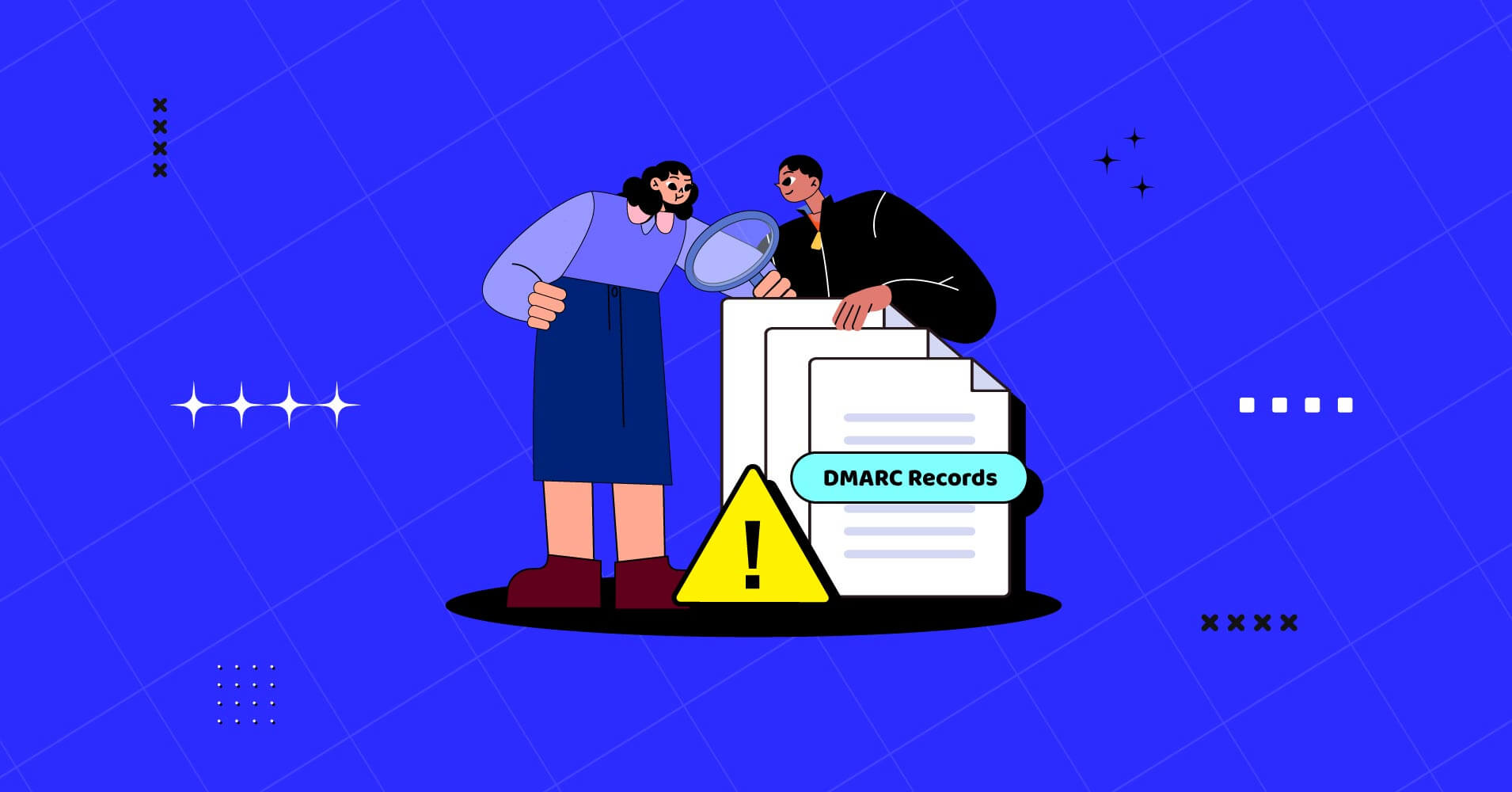
How to Fix the “No DMARC Record Found” Issue?
DMARC (Domain-based Message Authentication, Reporting, and Conformance) is an email authentication protocol that helps protect your domain from spam and phishing attacks. It guarantees that you and your clients can contact each other in confidence and privacy without being concerned about being the target of a cyberattack.
The error “No DMARC record found” indicates the absence of a DMARC record configured for your domain. This error commonly arises when the DMARC record is either improperly configured or not set up at all.
We understand how frustrated you may be with the issue. That’s why in this blog, we’ll explain the easiest way of fixing the no DMARC record found issue.
Let’s dive in!
What is the DMARC Record?
In order to defend a domain from spam and phishing assaults, You need to set up a DMARC record in its DNS (Domain Name System). It validates emails by comparing the “From” domain to the actual domain used by the sender. DMARC can filter out or flag an email as spam if it comes from an unapproved sender or recipient domain.
For example, let’s say that someone is trying to send an email from a domain called “example.com,” but they are actually using a server from a different domain, like “iamfake.com.” If example.com has a DMARC record, the email server receiving the email will check the record to see if the domains match. If they don’t, the email will be blocked or marked as spam, protecting example.com from being used in a spam or phishing attack.
DMARC records are created using a specific format that includes several different tags. The most important tags are the “v,” “p,” and “rua” tags.
- The “v” tag specifies the version of DMARC that is being used
- The “p” tag specifies the desired policy for emails that fail the DMARC evaluation
- The “rua” tag specifies the address where DMARC reports should be sent
Why Are You Seeing a “No DMARC Record Found” Issue?
Since you already know how important DMARC records are for authenticating your emails, you should be more careful about it. So, let’s go through the possible reasons behind showing the no DMARC record found error:
- The domain doesn’t have a DMARC record: This is the most common reason for the error. If the domain doesn’t have a DMARC record, email servers will be unable to check the authenticity of emails from the domain, leaving it vulnerable to spam and phishing attacks.
- There is an issue with the DNS records for the domain: If the DNS records for the domain are incorrect or out of date, it could cause the “No DMARC record found” error to appear. This could be due to a typo in the DNS records, a change in the DNS provider, or an issue with the domain registrar.
- The DMARC record is not properly formatted: DMARC records have a specific format that must be followed for them to work correctly. If the DMARC record for a domain is not properly formatted, it could cause the “No DMARC record found” error to appear.
- There is an issue with the email server: In rare cases, the email server itself could be the cause of the “No DMARC record found” error. This could be due to a problem with the server’s configuration or a problem with the server software.
Regardless of the cause, it’s important to fix the “No DMARC record found” error as soon as possible to protect the domain from spam and phishing attacks.
Easy Ways to Fix the “No DMARC Record Found” Issue
Now that you know the reasons behind this problem, let’s see how we can fix the issue. To fix the “No DMARC record found” error, you’ll need to create a DMARC record for your domain. If you have already created one, you’ll have to edit that.
Let’s go over the steps from scratch:
- Determine your DMARC policy: Before you can create a DMARC record, you need to decide what you want to do with emails that fail DMARC evaluation. You can choose to quarantine them, reject them, or allow them to be delivered to the recipient’s inbox.
- Generate a DMARC record: There are several tools available that can help you generate a DMARC record. One popular option is the DMARC Wizard. Simply enter your domain name and select your desired DMARC policy, and the tool will generate a DMARC record for you.
- Add the DMARC record to your DNS: The next step is to add the DMARC record to your domain’s DNS (Domain Name System) records. This will allow email servers to check the DMARC record when they receive an email from your domain.
To do this, you’ll need to log in to your domain registrar’s control panel and navigate to the DNS settings. Then, you’ll need to add a new DNS record for your DMARC policy. The type of record you’ll need to add depends on your DNS provider, but it will typically be either a TXT record or an SPF record.
- Test your DMARC record: Once you’ve added the DMARC record to your DNS, you’ll want to test it to make sure it’s working correctly. You can use a tool like DMARC Analyzer to do this. Simply enter your domain name and the tool will check your DMARC record and report any issues it finds.
- Monitor your DMARC record: It’s important to monitor your DMARC record regularly to make sure it’s working as intended. You can use a tool like DMARC Analyzer to monitor your DMARC record for you and alert you if any issues arise.
By following these steps, you should be able to fix the “No DMARC record found” error and protect your domain from spam and phishing attacks.
Conclusion
The importance of email authentication goes far beyond just increasing your email deliverability, it also keeps you safe from identity theft. But if the DMARC record is faulty, all your efforts in authenticating your emails will go in vain.
Hopefully, this article was helpful enough to solve the error that you are facing with your DMARC record-setting. Don’t forget to let us know in the comments if you find anything confusing.
Sakhawat Showrabh
Table of Content
Subscribe To Get
WordPress Guides, Tips, and Tutorials












Leave a Reply